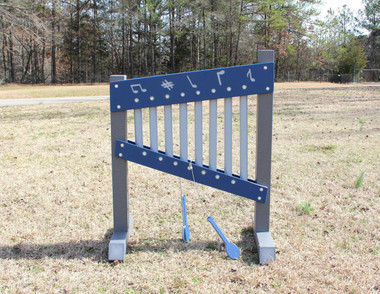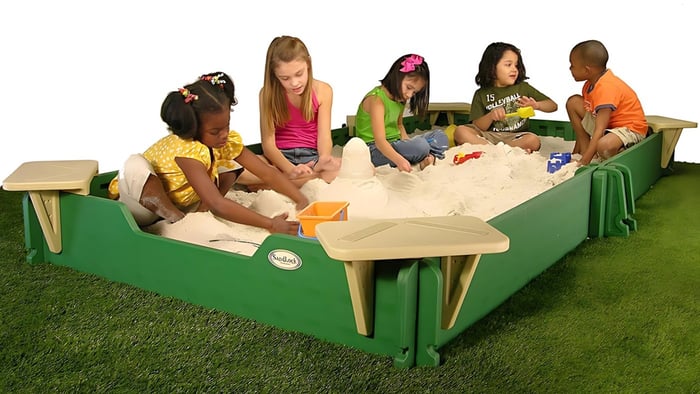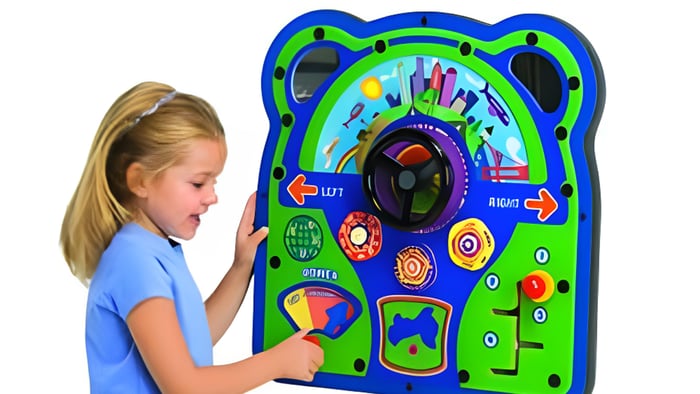
How to Write a Grant for Playground Equipment
Table of Contents
- Key Takeaways:
- The Funding Gap: Why You Need Grants for Playground Equipment
- Understanding Playground Grant Basics
- Essential Preparation Steps Before Writing
- The Grant Research Process
- Anatomy of a Winning Playground Grant Proposal
- 5 Proven Writing Strategies That Get Results
- Turning Rejection into Future Success
Need funding for your playground? Secure a grant for playground equipment by preparing clear goals and detailed budgets, tailoring applications to match funders' visions, assigning a project leader, and applying for multiple grants simultaneously. Little People's Cove offers helpful resources.
Key Takeaways:
- Successful playground grant applications require thorough preparation, including clearly defined goals and detailed budgets
- Tailoring each grant application to match the specific funder's vision significantly increases approval chances
- Designating a detail-oriented team leader is crucial for managing the complex grant application process
- Applying for multiple grants simultaneously improves your chances of securing sufficient funding
- Little People's Cove offers resources to help organizations navigate the playground funding process
Deluxe Challenger 25 Wave Style Playground Structure, Natural or Bright

$27359.99
This wonderful Deluxe Challenger 25 Wave Style Playground Structure meets the needs of preschools, child care and early years programs searching for a safer, developmentally appropriate...… read more
The Funding Gap: Why You Need Grants for Playground Equipment
That shiny new playground equipment your school or community desperately needs comes with a hefty price tag. Most organizations face a significant gap between their playground vision and what their budget allows. Little People's Cove regularly works with schools and communities facing this exact challenge – broken equipment, safety hazards, and outdated play spaces all need addressing, but limited funds often stand in the way.
Fortunately, playground grants provide a powerful solution. These specially allocated funds from organizations, foundations, corporations, and government entities can transform your playground dreams into reality. Unlike loans, grants never need to be repaid – they're essentially gifts to help build and maintain quality play spaces for children.
Understanding Playground Grant Basics
Playground grants are available to a wide range of organizations including schools, churches, daycares, parks departments, and non-profits. The application process follows strict standards and procedures, typically requiring formal written proposals that demonstrate both need and vision.
Grant applications might seem overwhelming at first, but understanding the basics will help you navigate the process successfully. Most playground funders look for projects that align with their specific mission – whether that's promoting physical activity, enhancing educational opportunities, increasing accessibility, or strengthening communities.
Each grant has its own requirements, deadlines, and focus areas. Some may fund complete playground installations, while others might contribute to specific elements like safety surfacing or accessible equipment. The key is finding grants that match your project's goals and then crafting applications that speak directly to what each funder values most. Shop Playground Musical Instruments
Essential Preparation Steps Before Writing
Before starting grant writing, proper preparation is essential for success. Follow these critical steps to build a solid foundation for your playground funding applications.
1. Define Your Playground Project Goals
Start by clearly articulating what you want to achieve with your playground project. Are you creating an inclusive space for children of all abilities? Building a nature-inspired playground to connect children with the outdoors? Or perhaps addressing specific safety concerns with existing equipment? Having well-defined goals will help you target appropriate grants and craft compelling applications.
Document specific objectives like improving physical activity levels, enhancing educational opportunities, increasing accessibility, or strengthening community connections. These measurable outcomes will show funders that you've thought carefully about your project's impact.
2. Conduct a Needs Assessment
Gathering concrete evidence of your community's need for this playground project is crucial. Document current playground conditions with photos of broken or outdated equipment. Collect testimonials from parents, teachers, or community members about playground limitations.
Whenever possible, include relevant statistics that support your case. This might include childhood obesity rates in your area, the number of children with disabilities who lack appropriate play spaces, or the distance families must travel to reach the nearest playground. This data transforms your request from a wish into a documented community need.
3. Create a Detailed Budget
Grant funders want to see exactly how their money will be used. Develop a comprehensive budget that includes all project costs:
- Equipment purchases
- Site preparation
- Safety surfacing
- Installation labor
- Ongoing maintenance
- Signage
- Accessibility features
- Landscaping
Include quotes from multiple vendors when possible. Also identify any matching funds, in-kind donations, or volunteer labor that will complement the grant funding. This demonstrates community buy-in and resource maximization.
4. Designate a Grant Team Leader
Successful grant applications require significant coordination and attention to detail. Designate a team leader who is organized, detail-oriented, and committed to seeing the process through. This person will manage deadlines, coordinate team efforts, ensure application requirements are met, and serve as the primary contact for funders.
While grant writing can be a team effort, having one person in charge of keeping everything on track is crucial. This role is perfect for a dedicated volunteer who can commit to the project through completion, as many grants require follow-up reporting and documentation after funding is awarded.
Genius Maker Musical Bongos Outdoor Play Panel

$2639.99
This sleek, ultra-durable Musical Bongos Panel set will have all the children marching to the beat of a different drummer, as they take their turn...… read more
The Grant Research Process
After completing your preparation, it's time to find funding sources that align with your playground project. Effective research will help you identify the most promising opportunities.
1. Finding Local and National Funding Sources
Cast a wide net when searching for playground grants. Start locally, as organizations in your community are often most invested in local projects. Potential funding sources include:
- Community foundations
- Local businesses and corporations
- Municipal or county government programs
- School district funding
- Parent-teacher organizations
- Service clubs (Rotary, Kiwanis, Lions)
Then expand your search to regional and national opportunities:
- Federal government grants (CDBG, LWCF)
- State parks and recreation departments
- National foundations focused on children, education, health, or community development
- Corporate foundations with giving programs in your area
Online grant databases can help, but don't overlook the value of personal connections and networking with others who have successfully funded similar projects.
2. Evaluating Grant Eligibility and Requirements
Once you've identified potential funding sources, carefully review each grant's eligibility criteria and requirements. Key factors to consider include:
- Geographic restrictions (some grants only fund projects in specific regions)
- Organizational eligibility (nonprofit status requirements)
- Project type limitations
- Funding amounts (minimum/maximum awards)
- Matching requirements (some grants require you to match a percentage of funds)
- Application deadlines and timing
- Reporting obligations after funding
Prioritize grants where your project is an excellent fit for the funder's mission and goals. Don't waste time applying for grants where you only marginally meet the criteria. Instead, focus your energy on applications with the highest probability of success.
Chime Wall Activity Center

$2105.25
The Chime Wall Activity Center is made from recycled plastic and would make a great addition to outdoor classrooms and natural playground areas. Meets CPSC...… read more
Anatomy of a Winning Playground Grant Proposal
A successful grant proposal follows a clear structure that convinces funders your playground project deserves their support. Here's how to craft each essential component:
1. Executive Summary/Cover Letter
This brief overview (typically 1-2 pages) serves as your proposal's first impression. Write it last, after completing all other sections, to ensure it accurately reflects your complete proposal. Include:
- Your organization's name and mission
- Brief project description
- The specific amount requested
- Project timeline
- Expected community impact
- Contact information
The executive summary should be compelling enough to make reviewers want to read your entire proposal, yet concise enough to provide a complete project snapshot.
2. Organization Introduction
Establish credibility by introducing your organization's history, mission, and accomplishments. Highlight your capacity to successfully implement and maintain the playground project. Include:
- Year established
- Legal status (nonprofit, school, government entity)
- Previous successful projects
- Community partnerships
- The specific audience you serve
This section should demonstrate why your organization is qualified to receive and manage grant funds effectively.
3. Problem Statement (Needs Assessment)
Clearly articulate the problem your playground project will address, using specific data and compelling narratives. Explain:
- Current playground conditions or lack of playground access
- Community demographics and needs
- Health, social, or educational challenges the playground will help solve
- Quotes or testimonials from community members
- Statistics supporting the need (childhood obesity rates, accessibility gaps, etc.)
Framing your project as a solution to well-documented problems makes it much more compelling than simply stating wants or wishes.
4. Project Description and Objectives
Provide a detailed description of your planned playground, including:
- Equipment specifications and features
- Site layout and design (include visual renderings if possible)
- Accessibility accommodations
- Safety considerations
- Educational or unique play elements
- Implementation timeline with key milestones
Clearly state your project objectives in measurable terms. For example: "Increase physical activity opportunities for 500 children in our community" or "Provide the first fully accessible playground within a 10-mile radius."
5. Budget Breakdown
Create a detailed, realistic budget that accounts for all project expenses. Format this as a clear spreadsheet with categories including:
- Equipment costs (itemized by component)
- Site preparation expenses
- Installation fees
- Surfacing materials
- Shipping/delivery charges
- Permits and inspections
- Maintenance fund allocation
Also list all funding sources, including the requested grant amount, other grants applied for, matching funds, in-kind donations, and community fundraising efforts.
6. Evaluation and Sustainability Plan
Explain how you'll measure the project's success and ensure its long-term viability. Include:
- Methods for tracking playground usage (visitor counts, scheduled activities)
- Plans for regular maintenance and repairs
- Future funding strategies for upkeep
- How you'll gather community feedback (surveys, focus groups)
- Plans for playground-centered community programs
Funders want assurance that their investment will have lasting impact and won't fall into disrepair shortly after installation.
8 Note Rainbow Chime Unit With Drums

$5248.00
Experience the professional sound quality of the PlayMore Rainbow Chime Unit with Drums, featuring eight colorful chimes in the F Major Diatonic scale. These chimes...… read more
5 Proven Writing Strategies That Get Results
Even with all the right components, how you write your grant for playground equipment makes a critical difference. Follow these proven strategies to make your playground grant application stand out:
1. Align Your Project with the Funder's Vision
Carefully research each funder's priorities, values, and giving history. Then explicitly connect your playground project to their mission. If a foundation focuses on childhood health, emphasize how your playground will increase physical activity. If they prioritize education, highlight the learning elements of your design.
Avoid using the exact same proposal for multiple funders. Instead, customize each application to speak directly to what matters most to that specific organization.
2. Use Compelling Data and Evidence
Specific facts are more persuasive than general statements. Instead of saying "many children in our community lack play opportunities," write "63% of families in our district must travel more than 2 miles to reach a public playground, according to our community survey."
Supportive research adds credibility to your case. Cite studies on play's benefits for childhood development, the importance of physical activity, or the impact of inclusive playgrounds on community well-being.
3. Follow Formatting Requirements Exactly
Many grant applications are rejected because they don't follow instructions. Pay meticulous attention to:
- Page limits
- Font type and size
- Margin requirements
- Supporting document guidelines
- Electronic submission protocols
- Deadline timing (including time zone considerations)
Create a checklist of formatting requirements for each grant and review it before submission.
4. Be Specific About Implementation Plans
Provide concrete details about how you'll execute your playground project. Include:
- The exact timeline with major milestones
- Who's responsible for each aspect of the project
- Permits required and their status
- Contractor selection process
- Community involvement opportunities
- Contingency plans for potential challenges
This level of detail shows funders you've thoroughly thought through the project's execution.
5. Proofread Meticulously
Grammatical errors, typos, and inconsistencies can undermine an otherwise strong proposal. After writing:
- Let your draft rest for a day before reviewing
- Have multiple people proofread independently
- Read the proposal aloud to catch awkward phrasing
- Check all numbers for accuracy and consistency
- Verify that attachments and appendices are correctly referenced
A polished, error-free proposal reflects the care and attention you'll bring to the playground project itself.
Turning Rejection into Future Success
Even the most well-crafted grant proposals sometimes receive rejections. Don't be discouraged! Many successful playground projects were funded only after multiple application attempts.
If rejected, respectfully request feedback from the funder about why your proposal wasn't selected. Use this valuable information to strengthen future applications. Consider applying to the same funder in their next cycle with an improved proposal that addresses their concerns.
Remember that most playground projects require funding from multiple sources. Continue applying for grants while also pursuing alternative funding methods like community fundraisers, business sponsorships, and in-kind donations of materials or services.
With persistence, thorough preparation, and compelling writing, you can secure a grant for playground equipment needed to create an amazing play area for your community. Your dedication to this process will ultimately be rewarded with the sight and sounds of children enjoying a safe, engaging play space for years to come.



